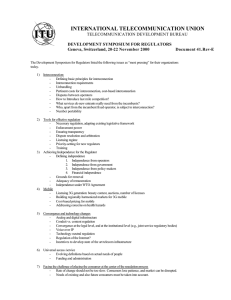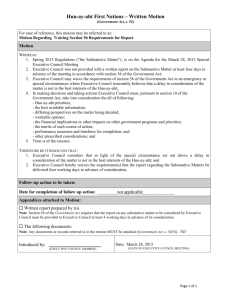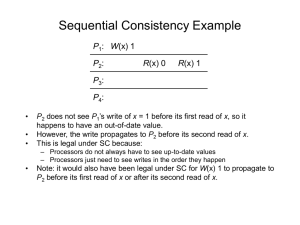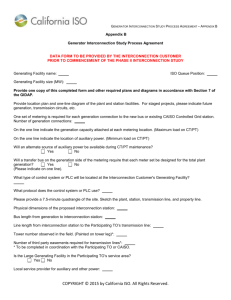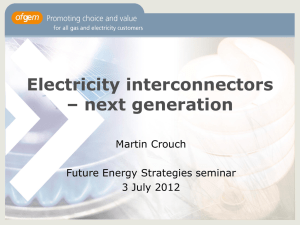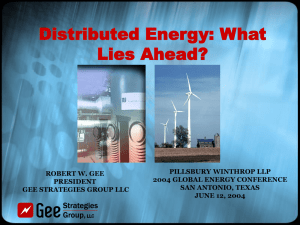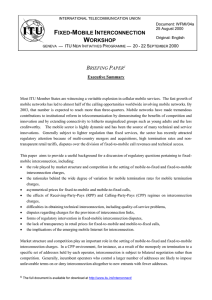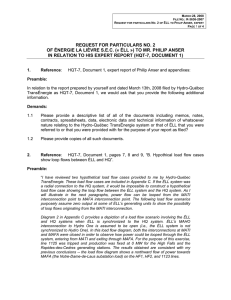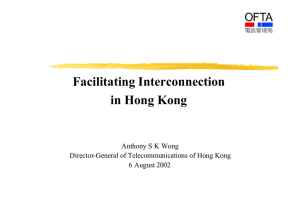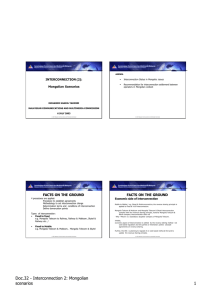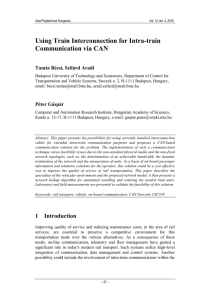Frequency Control Research Needs Howard F. Illian, President Energy Mark, Inc.
advertisement
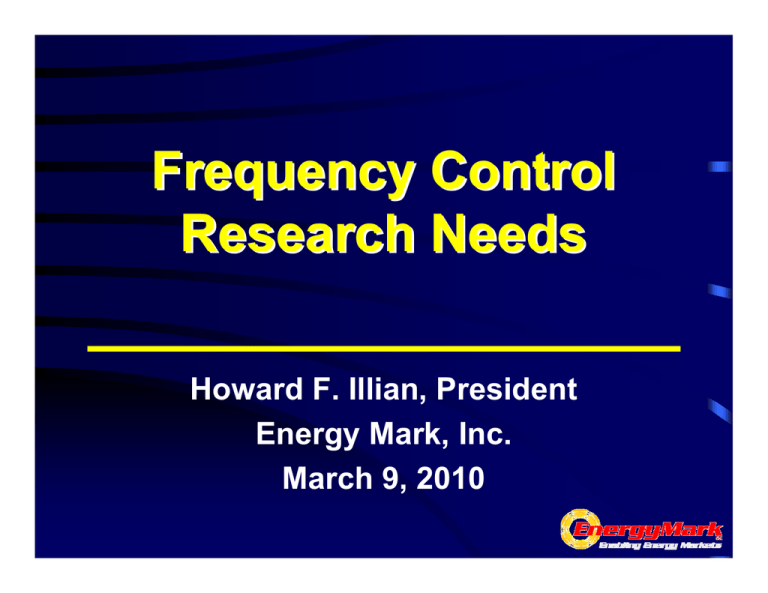
Frequency Control Research Needs Howard F. Illian, President Energy Mark, Inc. March 9, 2010 Overview ¾ Energy Mark’s Template for Funding ¾ Examples of Current Needs ¾ Conclusions Energy Mark’s Template ¾ Define the “Big Picture” ¾ State the “Underlying Assumptions” ¾ Forecast how the “Future Differs” ¾ Define “Nature of Acceptable Solutions” ¾ Results support “Substantive Decisions” General “Big Picture” ¾ All interconnections follow the Law of Conservation of Energy. ¾ Therefore, electric energy must be injected into an interconnection at the same instant that it is extracted by the customers. ¾ Frequency Control addresses this requirement for the total electrical interconnection. General “Big Picture” (cont.) ¾ Operations must be planned and studied to insure reliability ¾ Industry planning models address this problem over many time horizons Frequency Response Modeling Long-term & Mid-term Capacity Day and Hour-ahead Operations Hour-ahead & Short-term Operations External Reliability Limits Modeling Frequency Response Models ¾ “Big Picture” Simulate frequency disturbances for about 10 to 15 seconds following a disturbance. ¾ “Underlying Assumptions” The minimum frequency occurs within the first 10-15 seconds. ¾ The “Future Differs” The Frequency Response Characteristic changes. Actual & Natural Simulated Frequency Response 1990’s Eastern Interconnection Frequency Response 2007 60.02 60.01 60 No “Point C” to “Point B” Recovery 59.99 59.98 59.97 Response “Withdrawal” 59.96 59.95 59.94 0 6 12 18 24 30 36 42 Seconds Eastern Interconnection 48 54 60 Frequency Response Models ¾ “Acceptable Solutions” Modify the models to extend the effective horizon to 30 seconds of more. Reverse the changes in system operations that have caused the change in the Frequency Response Characteristic. ¾ “Substantive Decisions” Demonstrate need to reverse the change. Demonstrate models that match the Frequency Response Characteristic. External Reliability Models ¾ “Big Picture” Most operations planning models are deterministic. Reliability requirements are estimated externally and implemented by setting model limits such as reserves. ¾ “Underlying Assumptions” This method of estimating reliability limits externally provides appropriate reliability risk levels. External Reliability Models ¾ The “Future Differs” Current methods of setting external reliability limits are deterministic and unrelated to measureable levels of risk. They depend on the future being similar to the past. Numerous events and responses jointly contribute to frequency reliability risk. The future will include risk drivers that differ from any previously experienced. ERCOT Wind Event 5500 60.20 5000 60.15 4500 60.10 4000 60.05 3500 60.00 3000 59.95 2500 59.90 9:00 10:00 11:00 12:00 Sample Time Aggregated WGR Output 13:00 14:00 System Frequency Texas Interconnection 15:00 Hz (Freq) MW (Wind) Wind Output and Frequency for 1/28/10 Contingency Reserve (RRS) Wind Output, Regulation and RRS for 1/28/10 5500 1000 800 5000 600 400 200 4000 0 ‐200 3500 ‐400 ‐600 3000 ‐800 2500 ‐1000 9:00 10:00 11:00 Aggregated WGR Output 12:00 13:00 Sample Time Total Reg. Deployed Texas Interconnection 14:00 15:00 Total RRS Deployed MW (Reg, RRS) MW (Wind) 4500 External Reliability Models ¾ “Acceptable Solutions” Replace the deterministic models and reserve rules with probabilistic models that estimate the joint risks. Modify these models as system conditions change. ¾ “Substantive Decisions” Use the external reliability models to provide risk parameters to the current planning models. Conclusions ¾ Energy Mark recommends five steps Define the “Big Picture” State the “Underlying Assumptions” Forecast how the “Future Differs” Define “Nature of Acceptable Solutions” Results support “Substantive Decisions” ¾ Energy Mark’s experience indicates that good definitions and planning of research leads to successful results and ongoing funding. Questions
